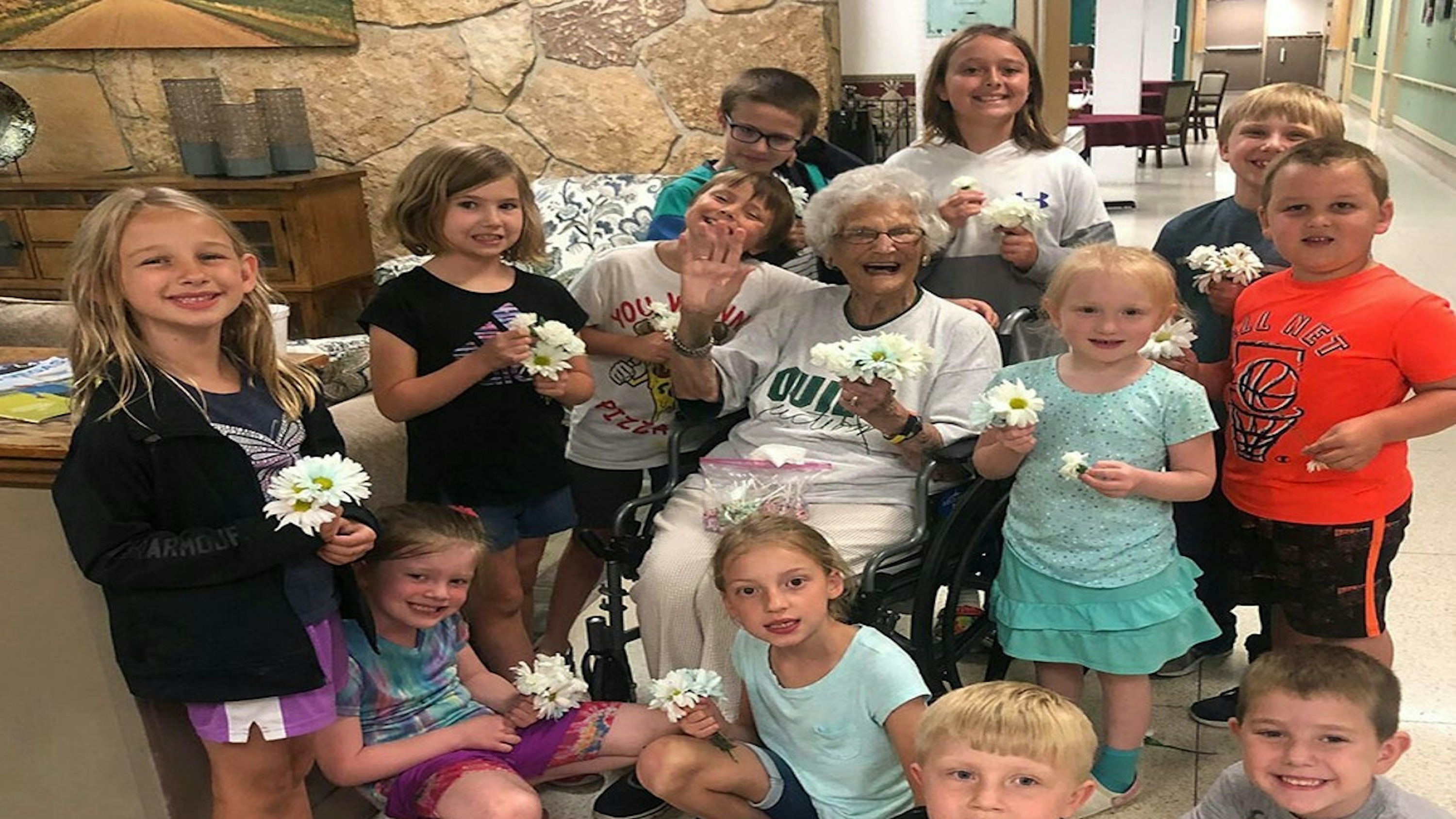
Healthcare and Senior Living Planner Tu-Anh Bui Johnson (TBJ) recently connected with several intergenerational directors to discuss the benefits of intergenerational care takeaways from the past year, and suggestions for future settings. Intergenerational care offers young children and older adults the opportunities to interact at senior living community settings. In the following, we share their thoughts on intergenerational care and what they've learned from their organizational programs.
Judy Thielke (JT): Life Enrichment Director, Knute Nelson, Alexandria
Knute Nelson was founded in 1948 through the bequest by the late MN Senator and Governor Knute Nelson to serve older adults in over 21 counties in West Central Minnesota. Knute Nelson is a non-profit, Christian-based organization that provides a full continuum of care in addition to many auxiliary services.
On June 18, 2018, Knute Nelson partnered with the local YMCA in Alexandria to open a daycare center for 60 children ages six months to 5 years. In previous years, the YMCA had a waiting list for their daycare facilities. Through the partnership, the new center reduces the waiting list and provides an immense amount of additional benefits for both generations.
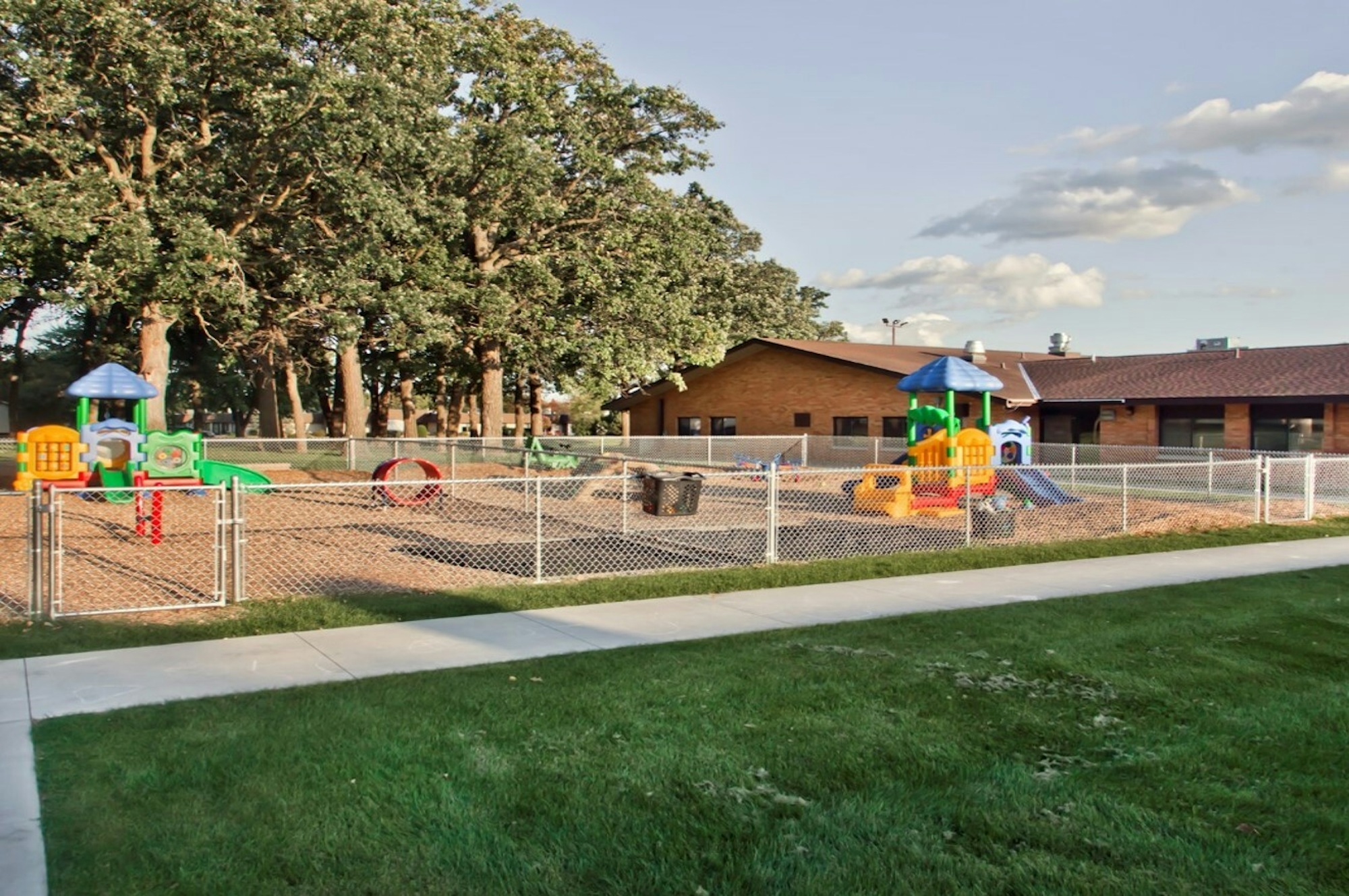
Bryon Nelsen (BN): Director of Nursing, Lakeview Methodist Health Services, Fairmont
Lakeview Methodist Health Care Center, Inc. opened its doors in June of 1964 as a mission of Minnesota's southwest district of the Methodist church. In 2018, Lakeview became the only skilled care nursing home in Fairmont, MN.
In the summer of 2017, space was leased to Building Blocks Learning Center to provide intergenerational care with Lakeview Methodist Care Center. The renovated space, which was previously Lakeview’s therapy department, can currently accommodate 80+ kids. Lakeview, with partnerships with Wold and Kraus Anderson, is completing a new care center including a new daycare that can accommodate up to 125 children. The new project is slated to open late Fall 2021.
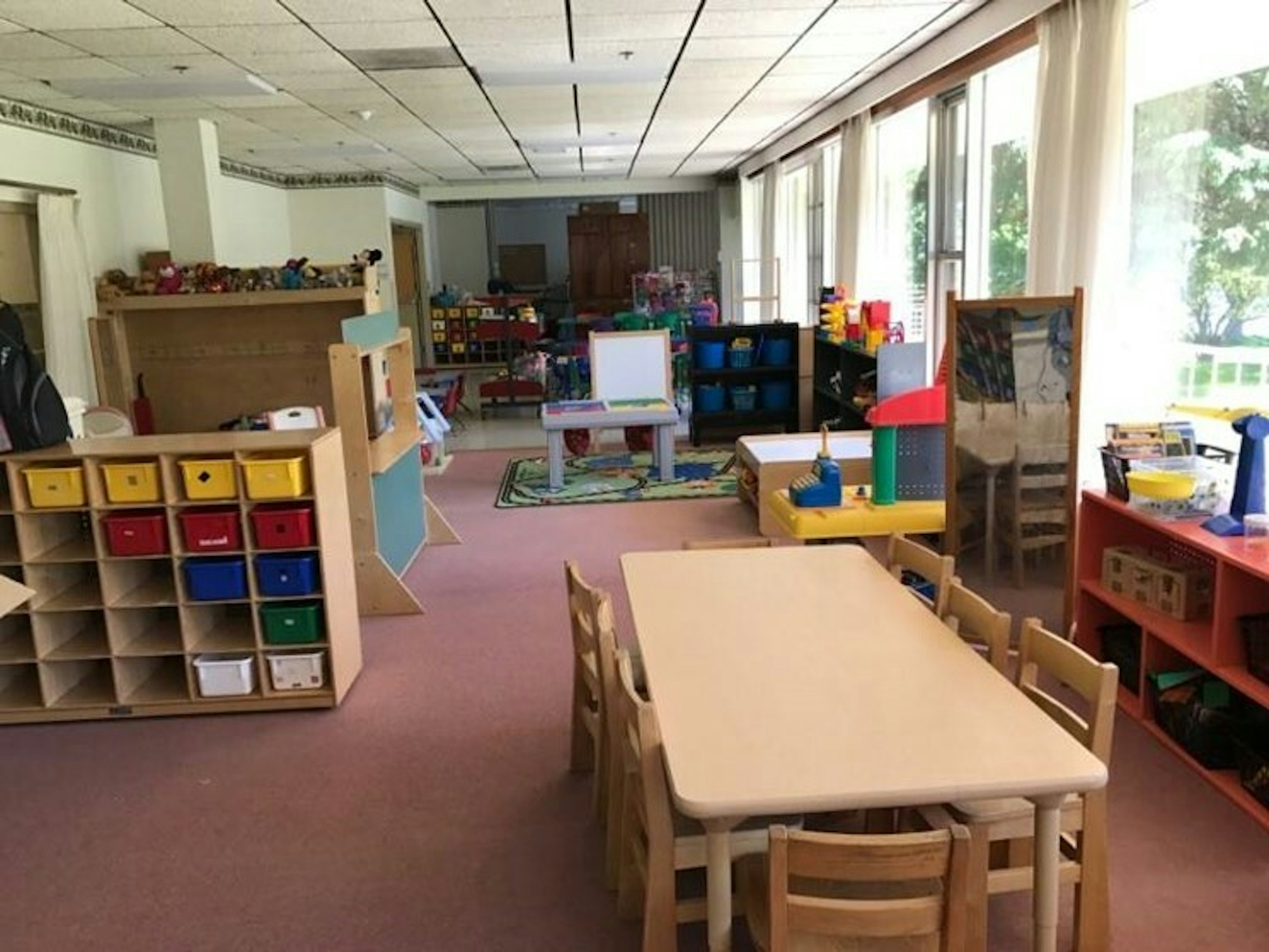
Jody Schumann (JS): Director of Child Care, Ebenezer and Michelle Jirik (MJ): Director of Child Care, Ebenezer
Ebenezer Senior Living was established in 1917 to provide community-centered care for homeless older people and others in need. Over the years, Ebenezer has evolved into the largest senior housing operator in Minnesota.
In 2002, an Ebenezer campus director had aspirations of creating an intergenerational program, which ultimately brought Ebenezer Ridges Child Care to fruition. Ebenezer branched out after seeing this succeed and took ownership of other intergenerational locations, including Towerlight Childcare, Riley Crossing Childcare, and The Pillars Childcare.
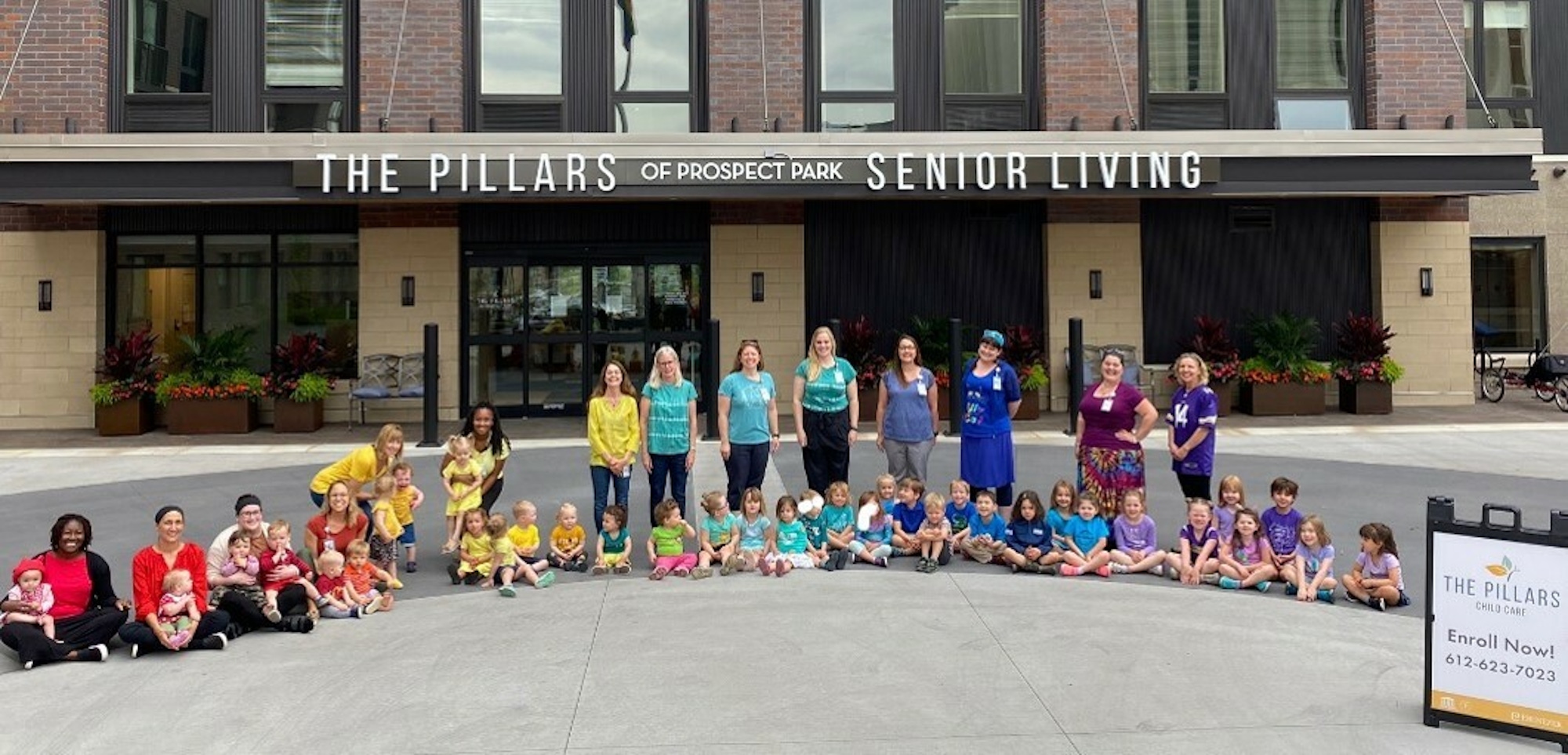
JS & MJ: At Ebenezer, we have two different types of intergenerational programs. We have shared and non-shared site campuses. While both children and seniors are co-located on shared site campuses, seniors and children still can interact on non-shared sites through regular activities. Below are a few examples of activities that happen through each programmatic type:
Shared Site:
Non-Shared site:
JT: We've continually noticed that our children and residents enjoy the interaction they get to have together. Our campus does various activities together, including coloring, puzzles, singing and other fun activities. Additionally, some of the best times we've noticed have been when seniors tell stories and reminisce with the children.
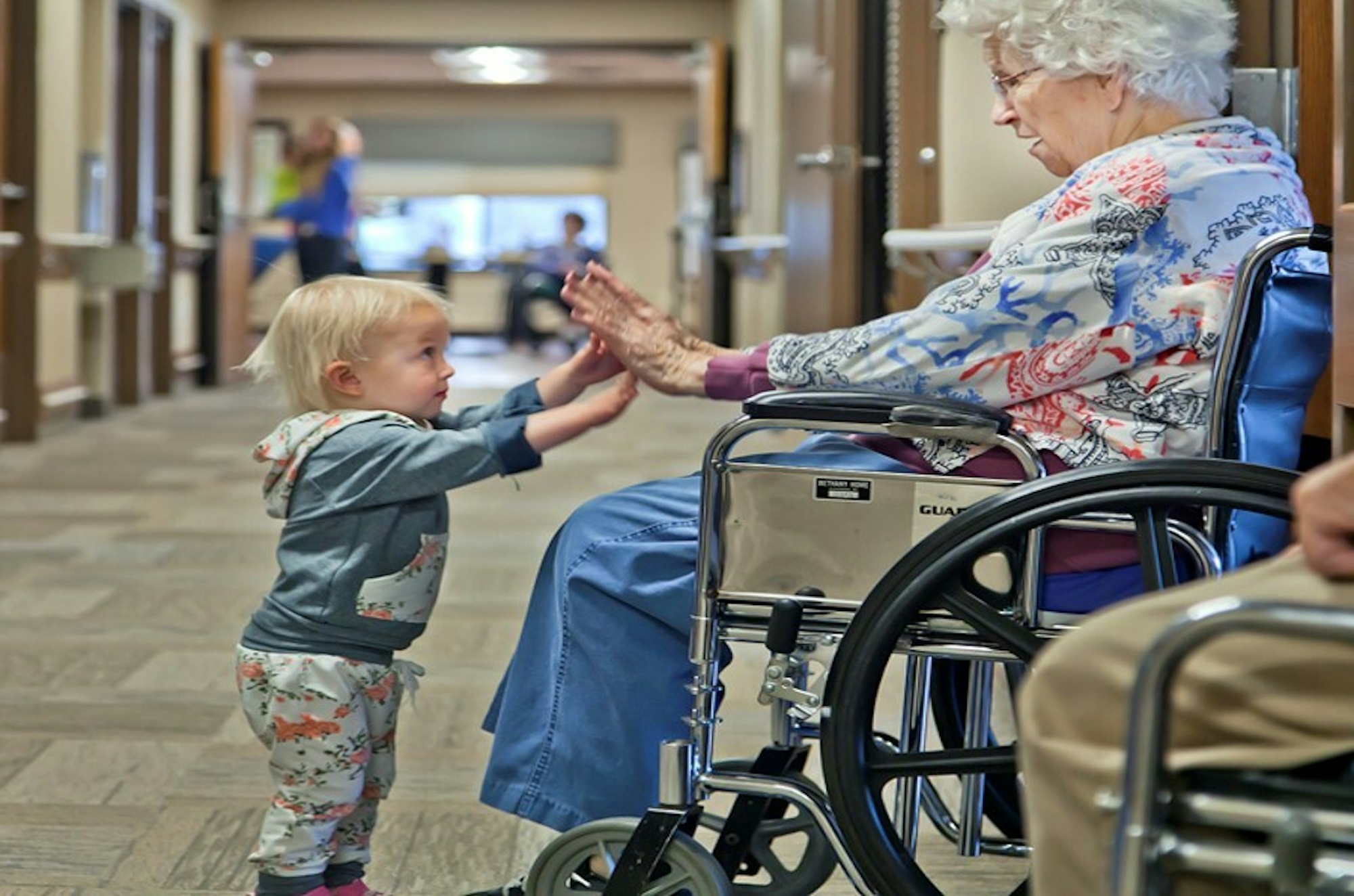
BN: Before covid, we were heavily active in intergenerational programs with the residents and children. This included activities such as bingo, bowling, card making, corn shucking and more. When coming and going from daycare, the children walked through the dining room area. Going this way allowed for a heightened daily interaction, and residents enjoyed seeing them every day.
JS: One of the main takeaways we've noticed at Ebenezer is the enhanced socialization for children and seniors. For example, many seniors have suffered from isolation and decreased socialization if they lived alone. Having time with the children helps enhance their moods. For Pre-K children, they need the socialization of being with others before entering school full-time. They also may not have experience communicating with older people, where having time in intergenerational care allows them the opportunity. It's an exercise in building patience, empathy and responsibility for them. This, in turn, helps decrease behavioral health issues that may arise both now and in the future.
Another benefit we've noticed for both age groups is the ongoing skill development. Children in our programs benefit from age-appropriate learning. Our seniors benefit from learning and ongoing skill development, especially in our programs like LifeLong Learning with Macphail Music, where they're paired with a child for music education. They also participate in arts and crafts and gardening, keeping the mind sharp by learning new skills or expanding their knowledge.
MJ: We’ve identified a deeper understanding of diversity. This isn't only racial diversity but age diversity as well. Many of the children in our program don't spend time around seniors. Intergenerational care teaches them empathy for people who are not like them or their parents. This includes times when they learn patience for their grandfriends who cannot do things as quickly as them. They learn respect for elders, which is a valuable thing in today's society. The children in our program learn from their grandfriends, and residents enjoy the energy of the kids. An overall theme for us is that the benefits of this program hold true for both seniors and children.
We’ve also seen the benefits of intergenerational care firsthand for our residents in our memory care units. Here, residents with dementia have shown increased levels of engagement when interacting with the children. We believe the meaningful time spent with children doing various activities helps improve their overall quality of life. And as stated before, we’ve noticed the time spent with elders has helped decrease behavioral issues amongst the children.
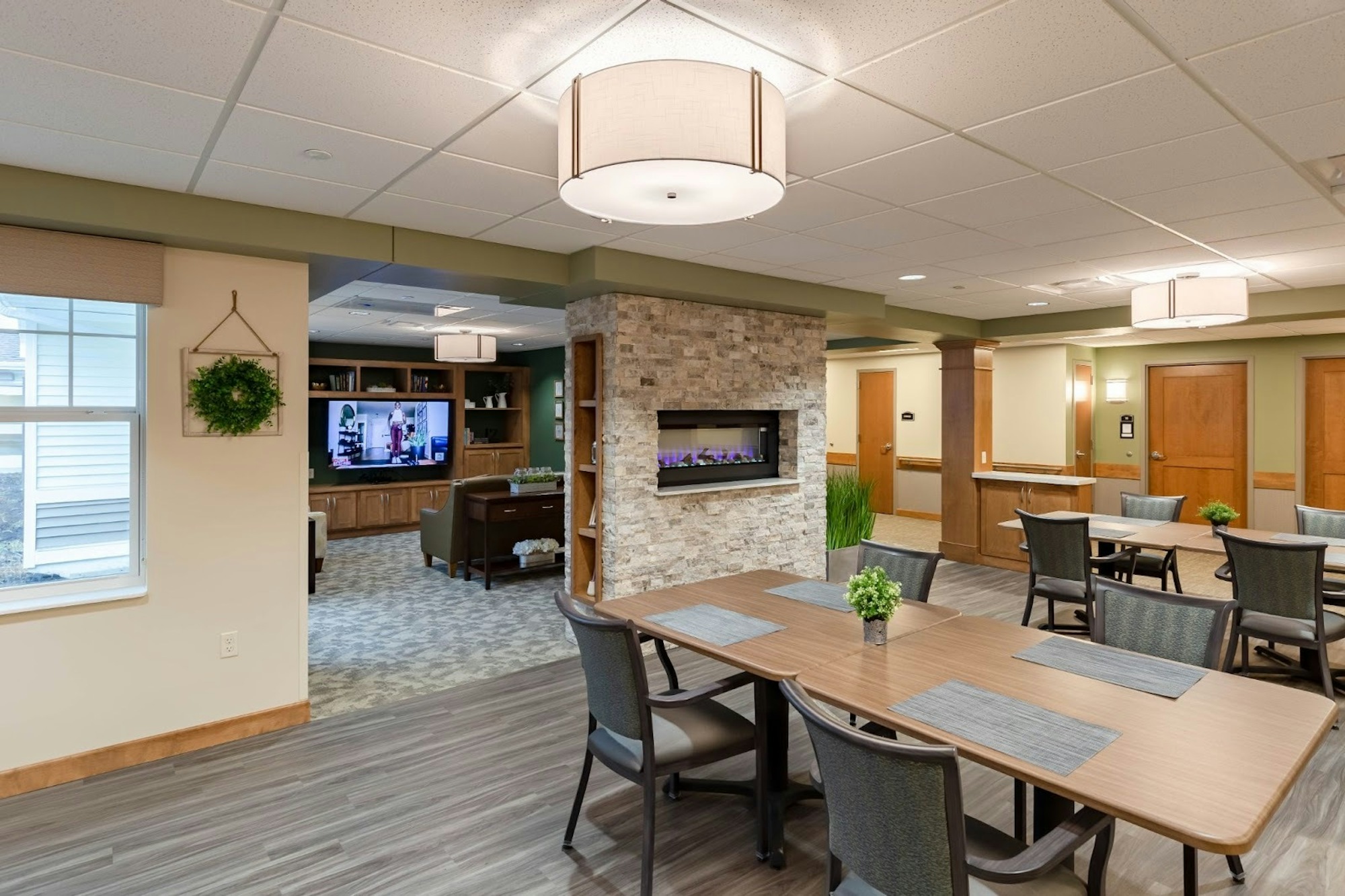
JT: Intergenerational activities are essential and provide immense benefits to us. One example is that several children in our programs don't have grandparents in the area. Intergenerational care allows for relationships to be built with older generations through our programming. Some kids have gotten so close to residents that they now call them grandma and grandpa. The residents benefit from this by having increased connections to the community. We've seen it as a win-win for everyone.
BN: Beyond our residents and children, we've also noticed the benefit intergenerational care has provided for our staff. For example, we have many staff members with young children who utilize the in-house daycare program. Doing so helps ease their daily schedules while also providing additional opportunities for interaction with their children being so close. Overall, children learn from their grandfriends, and seniors learn from and enjoy the kids' energy—many of the benefits of this innovative intergenerational program are consistent with both seniors and children. The noticeable benefits are that the intergenerational activities bring smiles and happy hearts to residents, staff and the children.
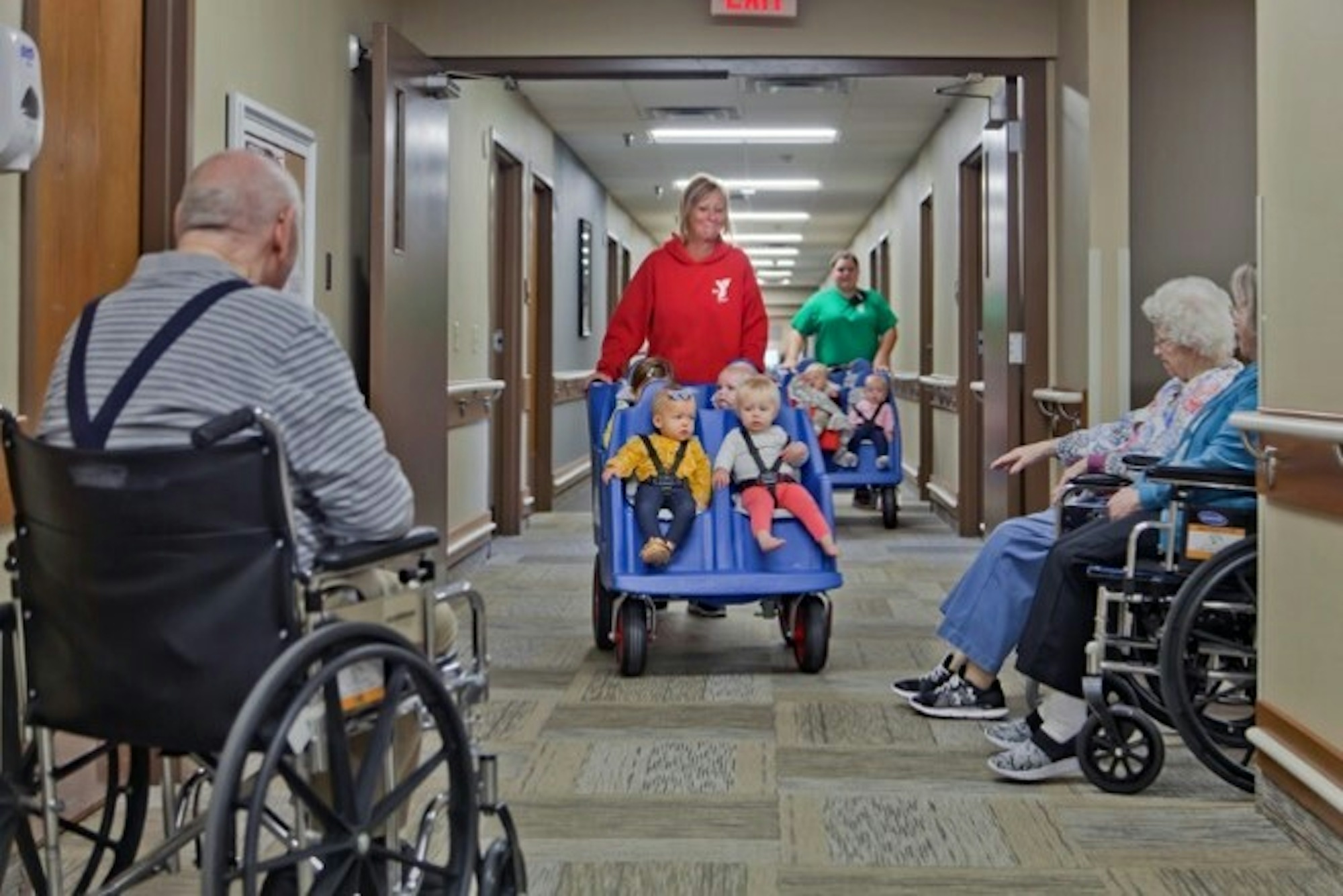
All: When working with an intergenerational program, make sure accessibility considerations are top of mind. Understanding the accessibility needs of residents and children is vital to creating a safe environment. Next, ensure there is a clear separation of space as these are two separate occupancies. This includes items such as independent businesses, insurance and other logistical elements. For all staff members involved in food preparation, ensure they're adequately trained staff to accommodate food preferences for residents and children. Finally, ensure your spaces have adequate space and review all code requirements through the Minnesota Department of Health (MDH), Department of Human Services (DHS), and local fire marshall. To assist in this process, consider hiring an architectural partner to help with code officials.
JT: Going into the pandemic, we realized just how complex the separation of residents and children would be. To help ease that process, the children would make treats and cards for the residents. Additionally, they would go outside and wave into the resident's windows when it was nice enough. We did what we could to bring both groups together safely to help create a sense of normalcy.
JS & MJ: Fortunately, we had many wellness protocols developed before the pandemic. To have the safest environment, we utilized those and became very separate. It essentially became two different buildings for the children and residents. To bring both groups together safely, window activities become a primary activity. Additionally, our residents and children used zoom technology, and the children mailed letters. Although our intergenerational friendships had to connect in a new way, they were still there.
BN: During COVID, the daycare children spent a lot of time making cards and other artwork for our residents. They also made regular window visits to their grandfriends. The residents spent time watching the children play in the playground area and waving through the windows. Although the pandemic presented its challenges, the two generations learned new ways to communicate.
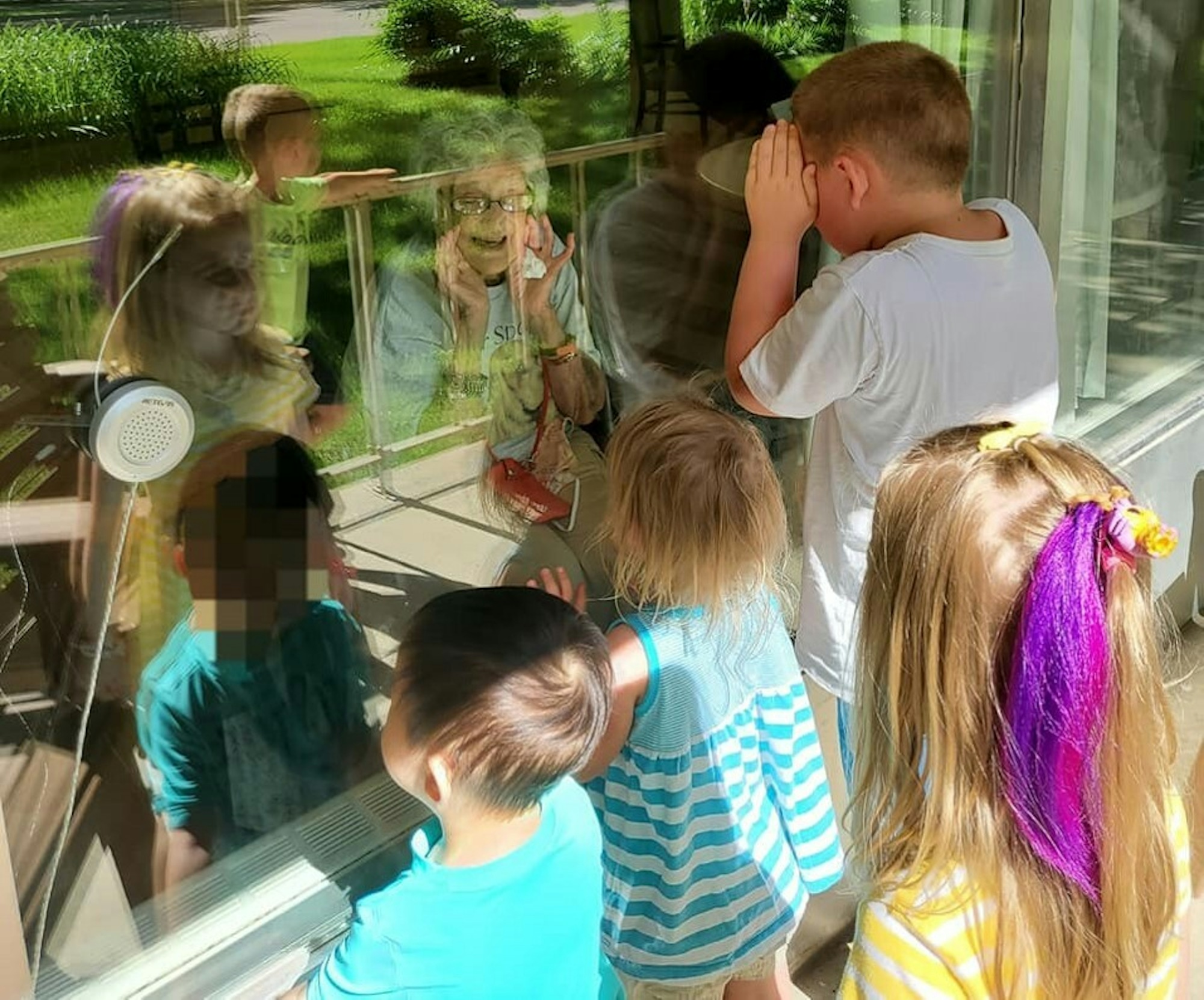
JS & MJ: Ebenezer has begun company-wide conversations on how we can re-engage. Considerations for us during these discussions include ensuring everyone feels safe to return and how we can provide that reassurance. For us, communication is going to be critical during this process. Sharing our re-engagement plan and continuing with wellness protocols (social distancing, enhanced technology) will allow us to ease into our return. For the summer months, our activities will be outdoors and in smaller groups than usual. Some of the activities will include gardening, listening to music and more in socially distanced settings.
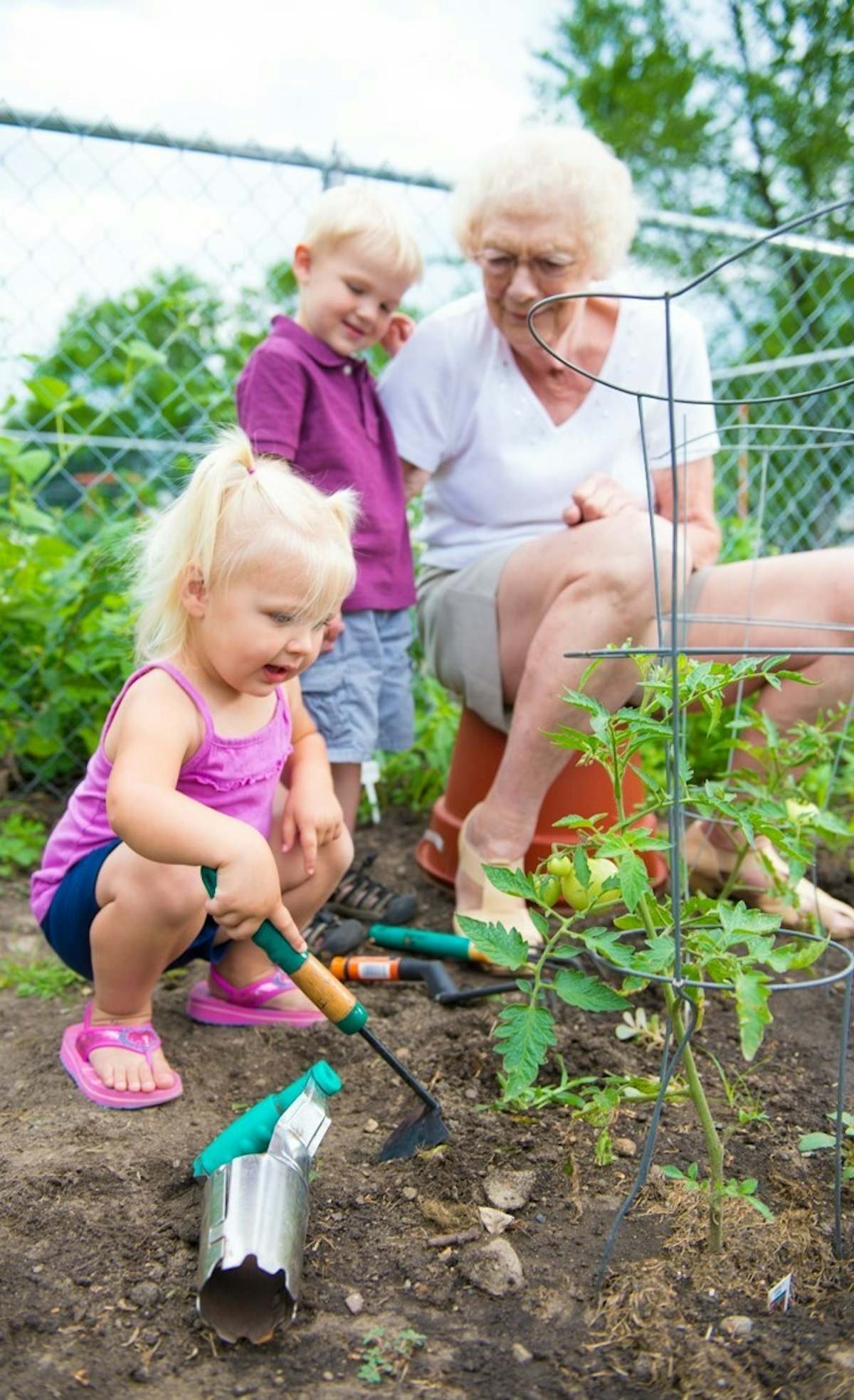
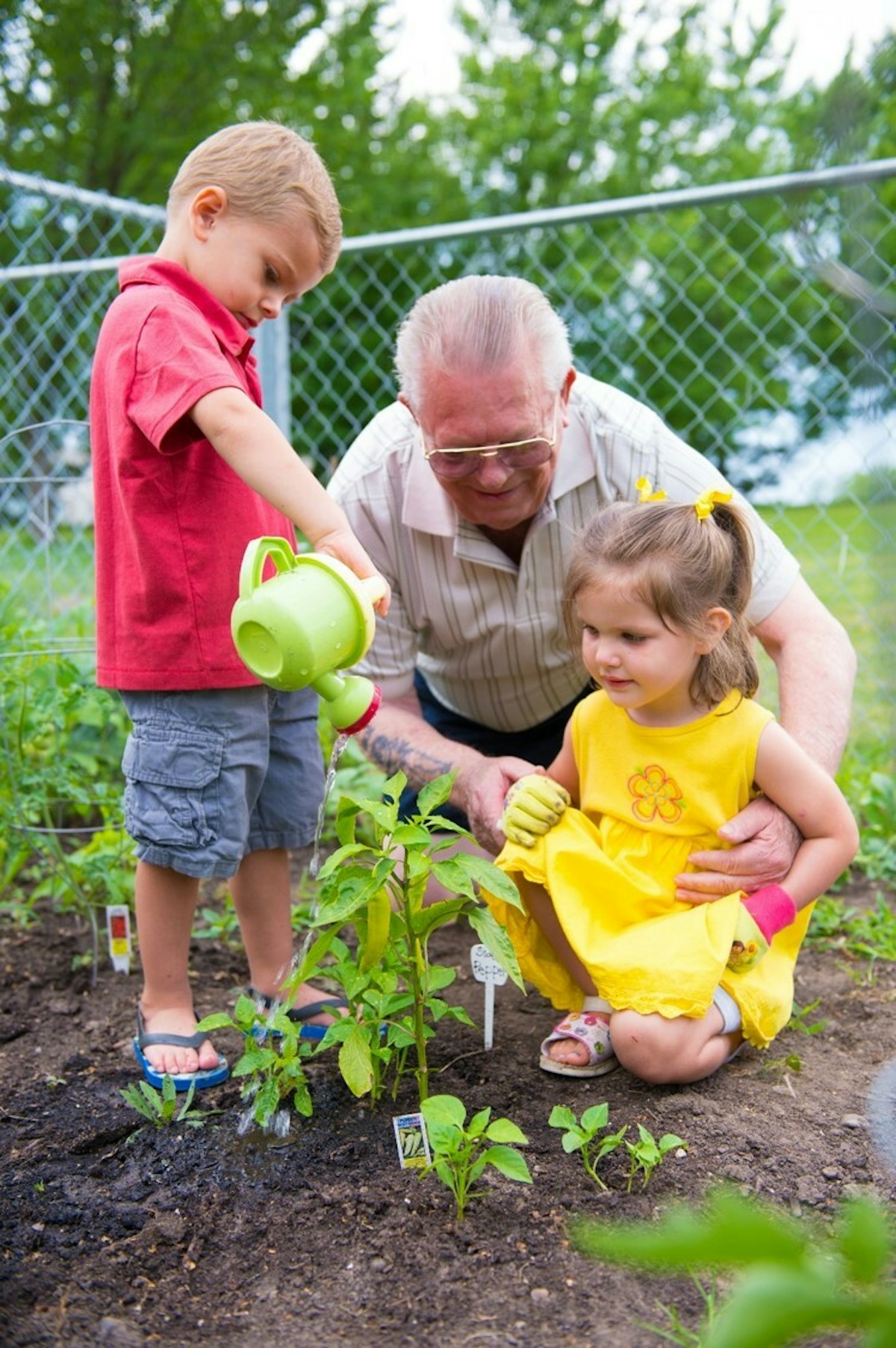
BN: Our future for intergenerational activities depends heavily on the evolving state regulations and our vaccination rates. As we move into the summer months, we plan on utilizing safe outdoor activities as much as possible. Although we won't be as close as we were before, we can still provide opportunities for groups to be together safely outside participating in activities.
JT: Though the past year has been challenging, we look forward to adapting when it is considered safe. Friendships and meaningful relationships between the residents and daycare children have been formed. No matter the age, the friendship is there, and we look forward to returning to normality.
JT: I'd recommend intergenerational care in any senior living community. The partnership goes a long way in improving both residents and children's lives. For our seniors, it would be an empty spot in their daily lives if they didn't get to see the daycare children. One tip that I have for any organization beginning this process is ensuring your space has optimal storage for daycare equipment. Overall, ensure that your location is properly equipped to handle daycare needs.
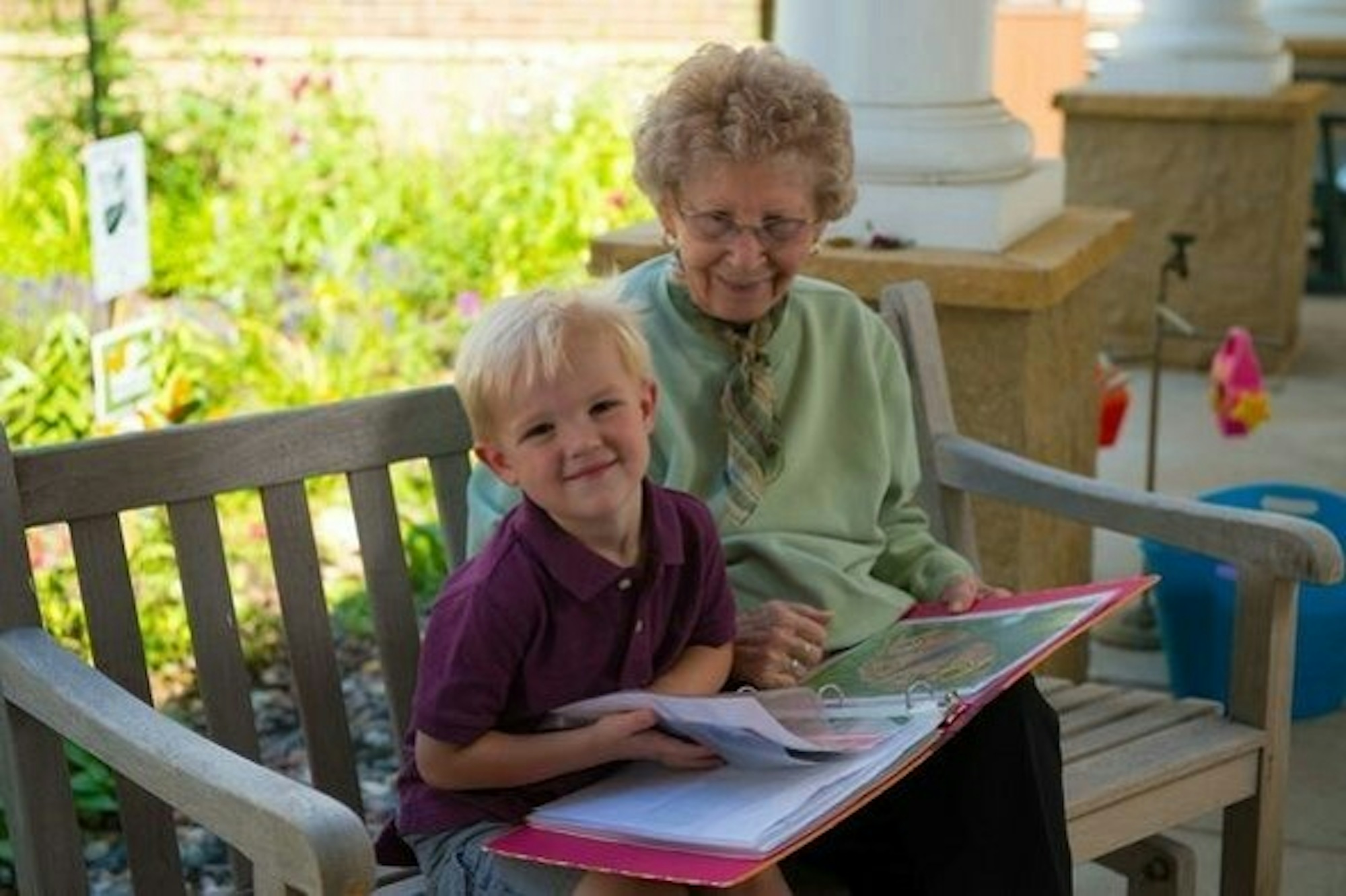
BN: If your organization is considering bringing a daycare in to provide intergenerational care, take the time to research. Look at the benefits for both children and residents, as well the potential challenges you'll have to overcome. Additionally, have a definitive understanding of what you'll need to ensure you can provide both to the best of your ability. Intergenerational is a wonderful resource, and we recommend you have a significant understanding of how you can make it work.
JS & MJ: We couldn't recommend intergenerational care more due to the number of opportunities it opens up for your community. If you're unsure where to start, utilize resources in your community such as the local school district or economic development agencies to assist in this process. Before implementing, ensure there is a solidified line of communication amongst all stakeholders, and make sure your organization understands the guidelines for intergenerational care.
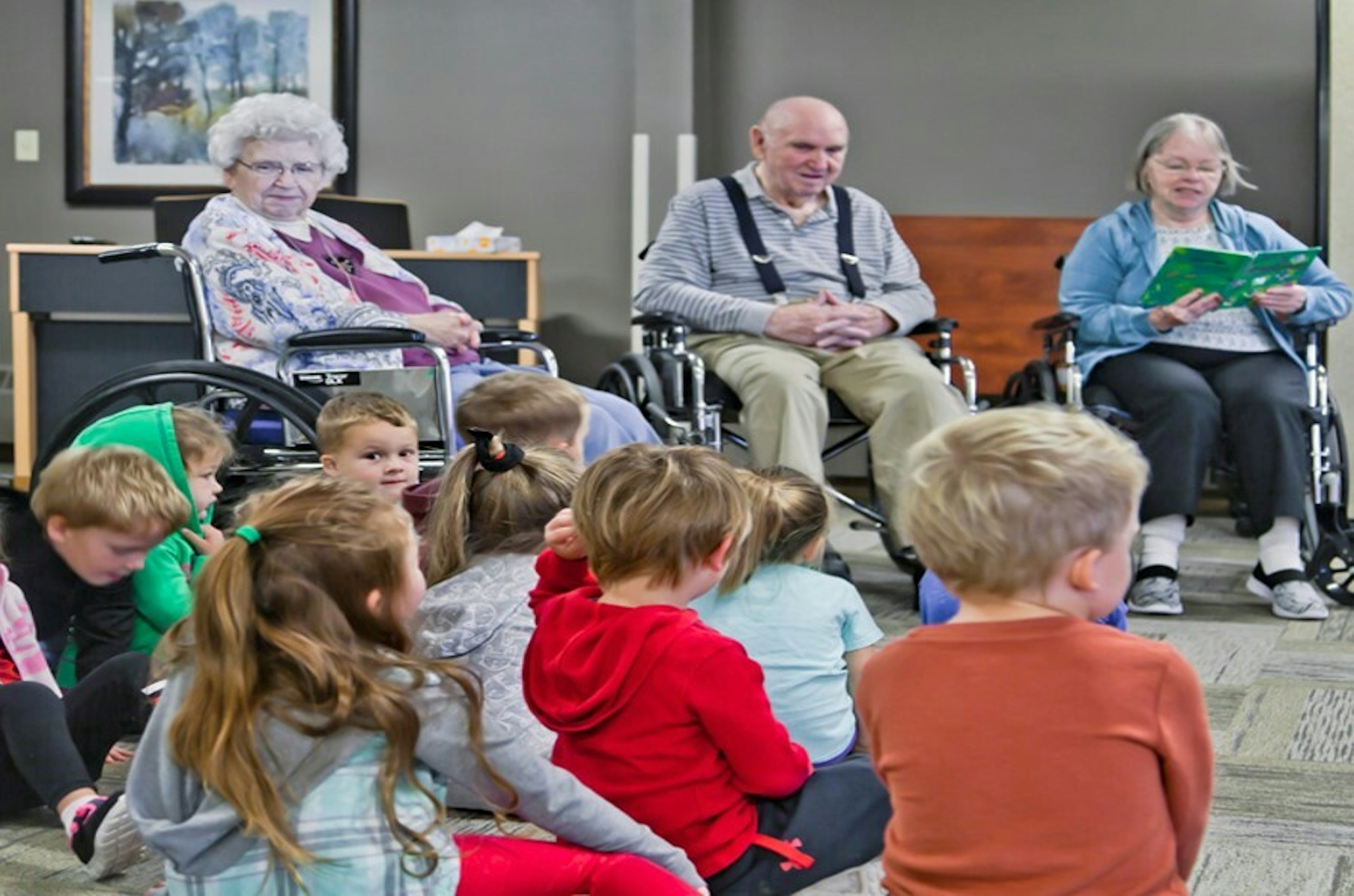
We want to help our seniors have the best life possible while also encouraging our next generation of children to make a difference in their lives. Through intergenerational care, we can do that within our organization. There are several resources that we recommend to learn more about intergenerational care, including Generations United and The Eisner Foundation.
We want to extend a special thank you to Judy, Bryon, Jody and Michelle for their time and insights. If you have any further questions about how you can provide intergenerational care in your community, please feel free to reach out to our team at Wold Architects and Engineers (call 1-888-254-6789 or email info@woldae.com).